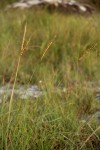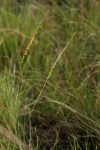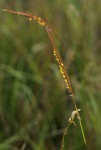Trachypogon spicatus
Selected images: Click on each image to see a larger version and details of the record View all images (6)
Photo: Bart Wursten
Along stream about 200 m before it enters river flowing from Bakoramambo towards Mubvumodzi, Chimanimani mountains.
Photo: Bart Wursten
Along stream about 200 m before it enters river flowing from Bakoramambo towards Mubvumodzi, Chimanimani mountains.
Photo: Bart Wursten
Along stream about 200 m before it enters river flowing from Bakoramambo towards Mubvumodzi, Chimanimani mountains.
Photo: Bart Wursten
Along stream about 200 m before it enters river flowing from Bakoramambo towards Mubvumodzi, Chimanimani mountains.
Photo: Petra Ballings
Along main road between Lake Kaulime turn-off and Kaperepeze road, Nyika National Park
Photo: Petra Ballings
Along main road between Lake Kaulime turn-off and Kaperepeze road, Nyika National Park
Detailed records: Display species records QDS maps by: Google Maps Point records by Google Maps
Species details: Click on each item to see an explanation of that item (Note: opens a new window)
| Synonyms: |
Andropogon plumosus Willd. Andropogon spicatus (L. f.) Steud. Andropogon truncatus (Nees) Steud. Heteropogon truncatus Nees Stipa spicata L. f. Trachypogon capensis Trin. Trachypogon durus Stapf Trachypogon glaucescens Pilg. Trachypogon involutus Pilg. Trachypogon planifolius Stapf Trachypogon plumosus (Willd.) Nees Trachypogon polymorphus Hack. var. truncatus (Nees) Hack. Trachypogon truncatus (Nees) Andersson |
| Common names: | Giant spear grass (English) Grey-beard grass (English) |
| Frequency: | |
| Status: | Native |
| Description: |
Densely tufted perennial with unbranched, erect culms, often red or purple, up to 1.5 m tall. A ring of white hairs present at the nodes. Leaves basal, 5-20 cm long and c. 5 mm wide. Inflorescence a single spike 8-20 cm long. Spikelets 6-8 mm long with awns 35-70 mm long, covered in velvety white hairs. Awns straight when young but curving outwards and looking messy when older. Stamens bright yellow to orange. |
| Type location: |
South Africa |
| Notes: |
A moderately nutritious grass but only palatable when young. Similar to Heteropogon contortus and Urelytrum argopyroides but both those grasses do not have hairs at the nodes. |
| Derivation of specific name: | spicatus: arranged in a spike; spicate |
| Habitat: | Wooded grassland, sometimes at margins of floodplains or drainage tracks. |
| Altitude range: (metres) | Up to 1700 m |
| Flowering time: | |
| Worldwide distribution: | Throughout tropical Africa and South Africa. Also in South America. |
| FZ divisions: | N,W,C,E,S |
| Growth form(s): | |
| Endemic status: | |
| Red data list status: | |
| Insects associated with this species: | |
| Spot characters: | Display spot characters for this species |
| Images last updated: | Wednesday 3 August 2016 |
| Literature: |
Burrows, J.E. & Willis, C.K. (eds) (2005). Plants of the Nyika Plateau Southern African Botanical Diversity Network Report No. 31 SABONET, Pretoria Page 365. (Includes a picture). Chapano, C. & Mamuto, M. (2003). Plants of the Chimanimani District National Herbarium and Botanic Garden, Zimbabwe Page 56. Chapano, C. & Mugarisanwa, N.H. (2003). Plants of the Matobo District National Herbarium and Botanic Garden, Zimbabwe Page 35. Cope, T.A. (2002). Poaceae Flora Zambesiaca 10(4) Pages 19 - 21. (Includes a picture). Heath, A. & Heath, R. (2009). Field Guide to the Plants of Northern Botswana including the Okavango Delta Kew Publishing Page 463. (Includes a picture). Jackson, G. & Wiehe, P.O. (1958). An Annotated Check List of Nyasaland Grasses The Government Printer, Zomba, Nyasaland Page 63. Jackson, G. & Wiehe, P.O. (1958). An Annotated Check List of Nyasaland Grasses The Government Printer, Zomba, Nyasaland Page 63. ? quid var. Mapaura, A. & Timberlake, J. (eds) (2004). A checklist of Zimbabwean vascular plants Southern African Botanical Diversity Network Report No. 33 Sabonet, Pretoria and Harare Page 111. Ntore, S. & al. (2024). Checklist of the vascular plants of Burundi Page 208. Roodt, V. (2015). Grasses & Grazers of Botswana and the surrounding savanna Struik Nature, South Africa Pages 212 - 213. (Includes a picture). Setshogo, M.P. (2005). Preliminary checklist of the plants of Botswana. Sabonet Report no. 37. Sabonet, Pretoria and Gaborone Page 146. Siebert, S. & Mössmer, M. (Editors) (2002). SABONET Southern Mozambique Expedition 2001; Provisional Plant Checklist of the Maputo Elephant Reserve (MER) and Licuati Forest Reserve (LFR) SABONET News 7(1) Page 28. Troupin, G. & Maquet, P. (1988). Poaceae Flore du Rwanda Spermatophytes Volume IV Page 385. (Includes a picture). Wursten, B., Timberlake, J. & Darbyshire, I. (2017). The Chimanimani Mountains: an updated checklist. Kirkia 19(1) Page 86. |
Other sources of information about Trachypogon spicatus:
Our websites:
Flora of Botswana: Trachypogon spicatusFlora of Burundi: Trachypogon spicatus
Flora of Caprivi: Trachypogon spicatus
Flora of Malawi: Trachypogon spicatus
Flora of Mozambique: Trachypogon spicatus
Flora of Rwanda: Trachypogon spicatus
Flora of Zambia: Trachypogon spicatus
External websites:
African Plants: A Photo Guide (Senckenberg): Trachypogon spicatusAfrican Plant Database: Trachypogon spicatus
BHL (Biodiversity Heritage Library): Trachypogon spicatus
EOL (Encyclopedia of Life): Trachypogon spicatus
GBIF (Global Biodiversity Information Facility): Trachypogon spicatus
Google: Web - Images - Scholar
iNaturalist: Trachypogon spicatus
IPNI (International Plant Names Index): Trachypogon spicatus
JSTOR Plant Science: Trachypogon spicatus
Mansfeld World Database of Agricultural and Horticultural Crops: Trachypogon spicatus
Plants of the World Online: Trachypogon spicatus
Tropicos: Trachypogon spicatus
Wikipedia: Trachypogon spicatus





